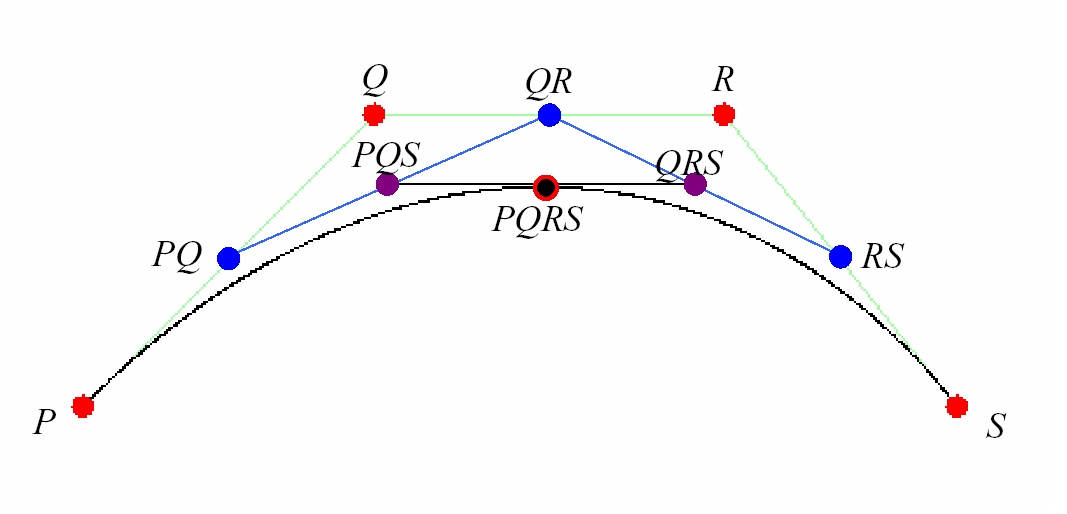|
A cubic Bezier curve is determined by 4 control points P, Q, R, S, shown in red. The curve starts at the point P and ends at the point S. Its tangent at P is parallel to the line segment PQ and its tangent at S is parallel to the line segment RS. It does not generally pass through the points Q or R. It is always contained within the convex hull of the four control points.
The parametric form of the curve is B(t) = (1 - t)3 + 3(1 - t)2t + 3t2(1 - t) + t3 In this applet, the curve is generated recursively as follows.

-- Harriet Fell source: bezier extends BufferedApplet (Ken Perlin) |
Click and drag the control points to change the curve. |